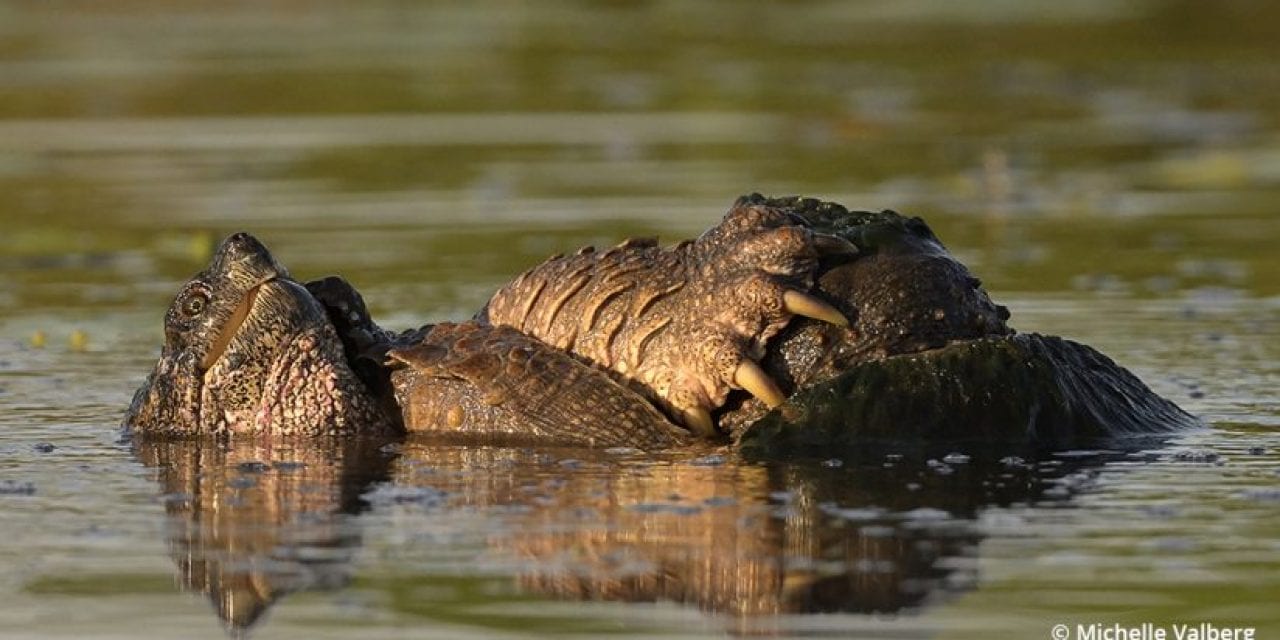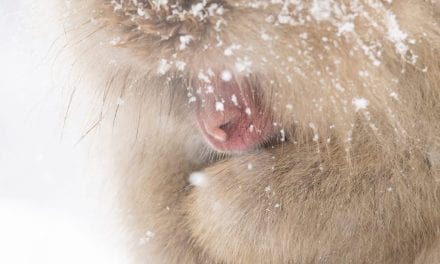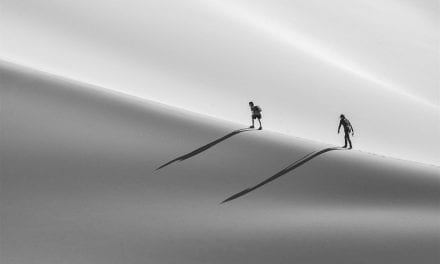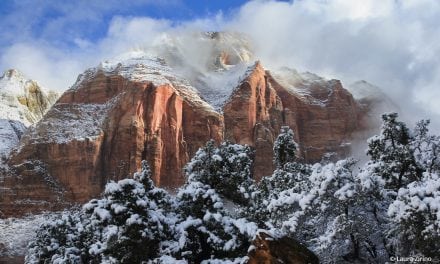In the months before announcing its new Nikon Z series full-frame mirrorless system, Nikon put the Z 7 camera and Mount Adapter FTZ in the hands of select Nikon Ambassadors to test pre-production models. We talked to two of the Ambassadors who had advance access to the camera— wildlife photographer Michelle Valberg and landscape and night photographer Adam Woodworth—about their experience and initial impressions working with the Z 7 and Mount Adapter FTZ with their F mount lenses.
Nikon Z 7 For Wildlife Photography
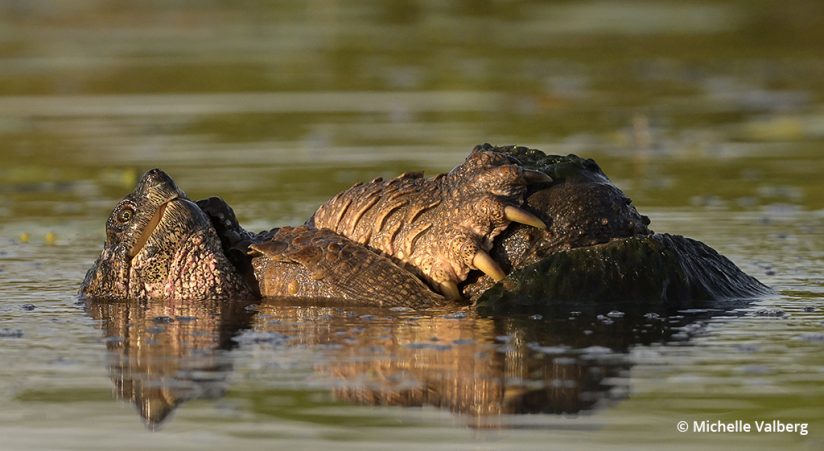
For Valberg, one of the biggest advantages is the silent shooting that’s possible with mirrorless systems. The Z 7 can shoot silently at up to 9 fps. “This is a whole different experience with wildlife photography,” she says. “For example, when I was photographing snapping turtles, I was able to be immersed in the action without any disturbance to the animals, to experience this amazing interaction without the sound of the shutter going off. I was able to hear the sound of their breath, blowing bubbles and the water as they splashed with their massive claws. It was beautiful to be in nature, capturing these creatures in their environment, without interference and truly experiencing the moment.”
One feature of mirrorless cameras that’s a sticking point compared to DSLRs is their electronic eye-level viewfinders. Though EVFs allow more data to be overlayed in the viewfinder and enable useful features like focus peaking display, for many photographers, those capabilities don’t compensate for the superior clarity of optical viewfinders.
Early EVFs were frankly not very good, and that stigma is a challenge for mirrorless camera makers to overcome. EVFs have improved dramatically in recent years, with increased resolution and faster refresh rates. Nikon feels it really got the EVF in the new Z series right, and Valberg agrees. With minimal lag and blackout, 3.6-million dot resolution, Nikon optics and approximately 100 percent coverage, using it is an experience pretty close to that of a true optical viewfinder. “Seeing is believing,” she remarks. “Being able to check your exposure in real time and having all your menus and settings in the viewfinder is a game changer. I shoot manual,” Valberg explains, “and if I am in a moving kayak with constantly changing light, especially in the early morning, with moving animals, having the ability to see my exposure live and not have to look at the back of my camera allowed me to be more efficient and effective with my shooting.”
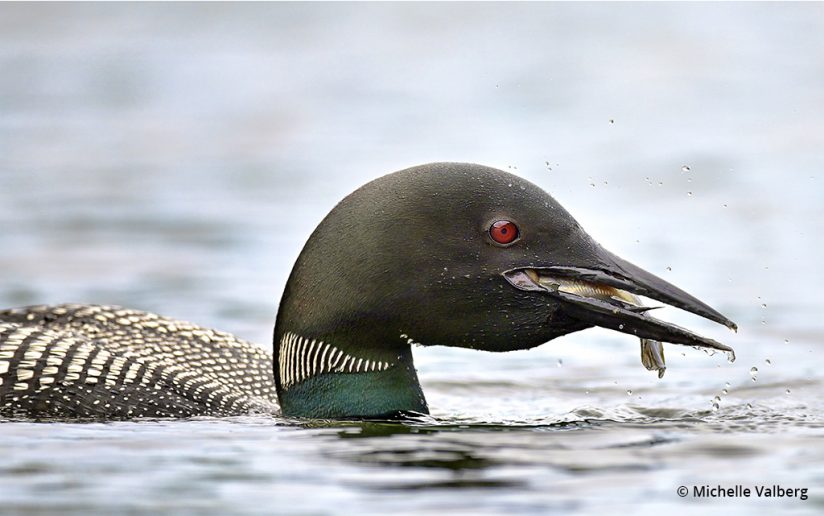
She also appreciates being able to review and change key camera settings without taking her eye from the viewfinder. “Reviewing your images, checking focus, changing white balance, frame rate or picture controls—having all of those options in the viewfinder made my results better,” she says. “I think it enhanced my creativity as well.”
Both Valberg and Woodworth shot the Z 7 with their favorite F mount lenses via the new Mount Adapter FTZ. Valberg also had the opportunity to shoot with the new ultra-compact AF-S NIKKOR 500mm f/5.6E PF ED VR super tele prime. “I photograph often from my kayak on Sharbot Lake, Ontario,” she explains, “so the combination of this smaller prime lens with the Z 7 is ideal for me. This lens is half the size of the AF-S NIKKOR 500mm f/4E FL ED VR. It’s sharp with great clarity and fast focusing.” For wildlife photography, a nimble combination of camera and telephoto lens is very advantageous. “When hand-holding a 500mm prime lens while on the water with creatures that are skittish and go in the opposite direction from you, acting quickly is key to getting the shot. Having a lightweight camera and lens combination improved the chances of capturing animals in their environment and in action.”
Valberg also shot with the AF-S NIKKOR 800mm f/5.6E FL ED VR, Nikon AF-S NIKKOR 180-400mm f/4E TC1.4 FL ED VR, Nikon AF-S NIKKOR 200-500mm f/5.6E ED VR and the AF-S NIKKOR 70-200mm f/2.8G ED VR II. In her experiences, all of these lenses performed without any loss of functionality nor image quality. “There is absolutely no image degradation whatsoever with the use of the FTZ adapter,” Valberg reports. “The auto-focusing capability was not compromised either.” Additionally, the Vibration Reduction systems built into these lenses are enhanced by the Z 7’s 5-axis in-body image stabilization, which provides up to 5 stops of correction and adds roll stabilization. “Having the VR lenses work in tandem with the in-camera 5-stop VR is a dream,” she says.
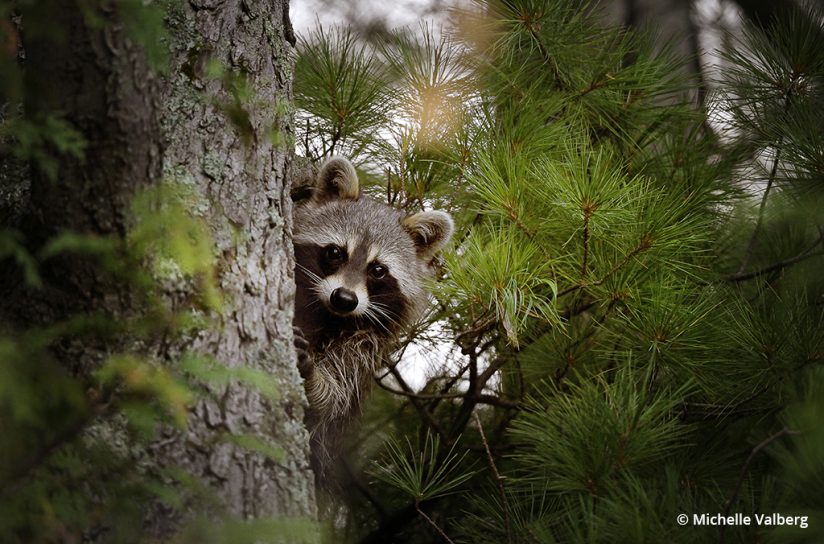
Though Valberg is impressed with the size and performance of the Z 7, she sees the camera as a complement to—not a replacement for—her DSLRs. “For now, the Z 7 will be in my camera bag next to my D850 and D5. For my kayak and wildlife shooting—guaranteed [it will be the] Z 7 with the 500mm PF. It is the answer to the heavy camera bags and weight issues.
“I guess I am not ready to give up my DSLRs yet,” she concedes. “But I also had to give back the Z 7 as it was a pre-production unit. Once I have all these cameras in my bag, we’ll see which one I reach for most.”
Overall, Valberg is very impressed with Nikon’s entry into full-frame mirrorless cameras. “I am anxious to see how the Z 7 changes my approach and the connection with my subject,” she says. “I absolutely love the silent shooting and experiencing nature in all its glory. There is so much to this camera, I can’t wait to explore and shoot with it more. It is going to take my photography to a whole new level.”
Nikon Z 7 For Landscape Photography
“As a landscape photographer I’m excited about mirrorless cameras for their weight and space savings in my hiking pack,” says Adam Woodworth, “so I had been eagerly awaiting a Nikon mirrorless full-frame camera for a few years.” He says it was worth the wait. “Not only did we get the smaller size of a mirrorless camera, we got a new lens mount that allows for better optical design, promising lenses that have very well-controlled light fall off, minimized coma distortion and chromatic aberration, and that are sharp corner-to-corner even at their largest apertures.” For Woodworth, whose specialty is landscape astrophotography, “This is a huge deal, and my hope is that I can get sharp stars without coma distortion in the corners of any lens.”
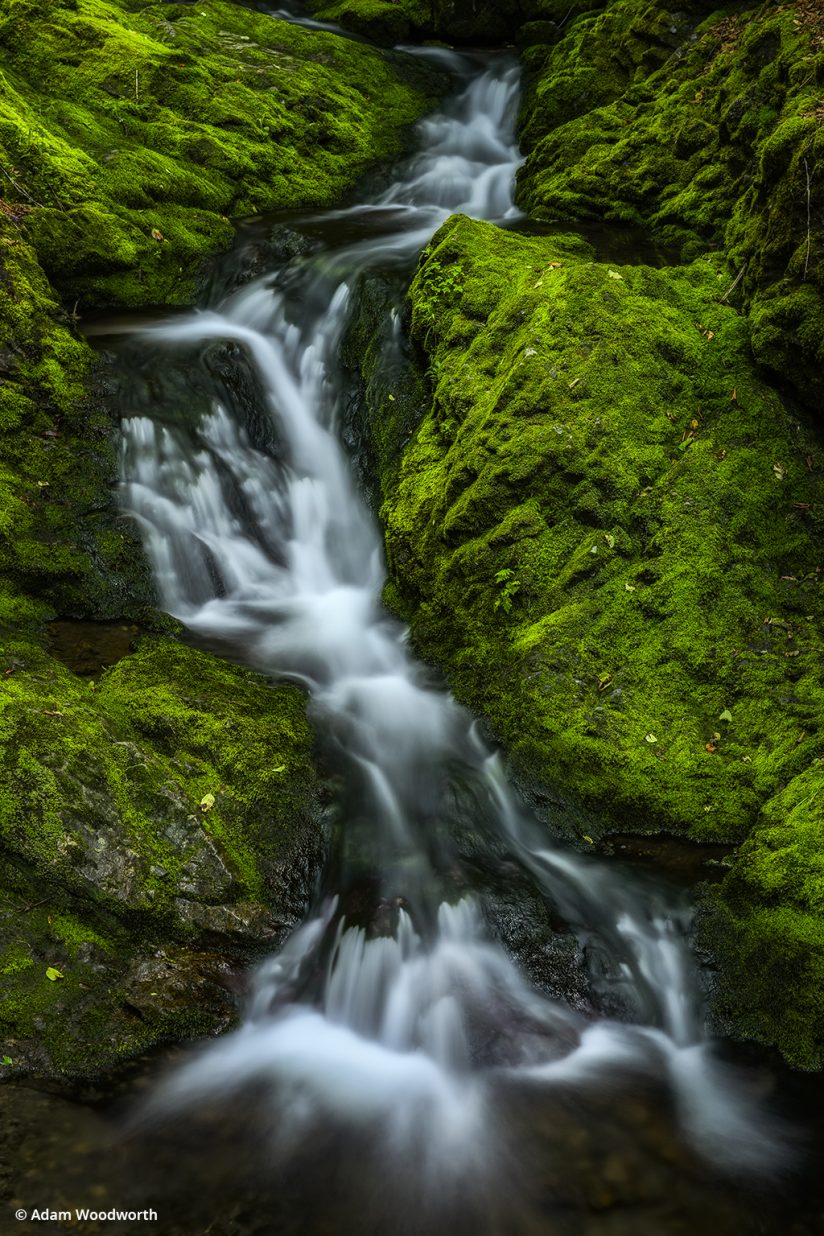
He experienced the size and weight advantages of the Z series compared to his DSLRs right away. “My first major outing with the Z 7 was a 6-mile hike through the woods to photograph waterfalls,” he recalls. “The weight savings of the Z 7 was noticed and appreciated after slogging along slippery ledges, wading through the stream, rock hopping and climbing up and down the steep river bank.” And it’s not just the weight, but also the “packability” of the camera. “The smaller size means that it’s much easier to fit two bodies in my camera bag,” he says, “for when I want a backup camera on a trip.”
Woodworth also mentions the Z 7’s EVF as top feature. “When shooting landscapes with the Nikon D850, I use the rear screen all the time in Live View mode to see the histogram and check focus. With the EVF on the Z 7, I can do this in brighter situations where viewing the rear screen is difficult, even at maximum brightness,” he notes. We agree—rear-panel LCDs can be basically unusable in very bright ambient light, making an eye-level viewfinder, whether optical or electronic, an essential component of any camera for serious photography.
But more than that, like Valberg, Woodworth mentions the additional information that EVFs can display as an advantage compared to his DSLRs. “I can put my eye up to the EVF and use all the menus and functions that are available on the rear screen. The EVF also doubles as a loupe for seeing very close up in playback mode—I can zoom in to 100 percent or greater on an image when looking through the EVF and check focus and details much better than I can on the rear screen. Many landscape photographers carry a loupe that they use on the rear screen for this purpose, but the EVF might make that obsolete.”
Another benefit of the Nikon Z 7’s EVF that might not be obvious to most is that its brightness is adjustable. “For landscape astrophotography,” Woodworth explains, “it’s important to be able to adjust the EVF and monitor to a setting that doesn’t have either illuminated during the exposure or during long exposure noise reduction (dark frame). On the Z 7 there is a button on the EVF to quickly change EVF/monitor modes. Setting this to “Prioritize Viewfinder” was perfect for night photography. In this mode the EVF only lights up when you put your eye to it, and the monitor only displays the camera settings when you hit the DISP button and is usable in playback mode, but otherwise the monitor doesn’t turn on.” With the monitor and EVF dark, he can be certain that the camera isn’t generating any light which could pollute the exposure. Plus, Woodworth notes, it saves some battery power.
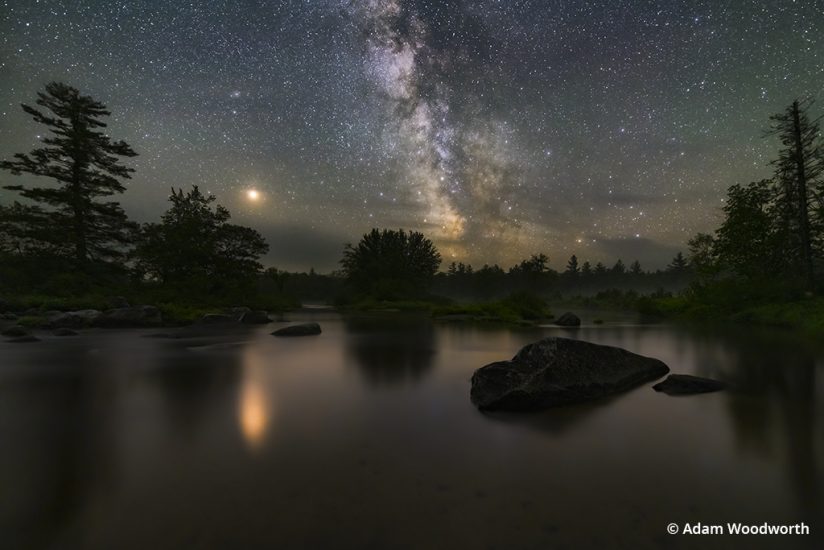
Speaking of the battery, the Z series introduces a new one, the EN-EL15b. It is possible to use EN-EL15a battery found in the D850 with the Z 7, but Nikon states that the 15a will not provide as many shots per charge as the 15b. And, even with the 15b, the Z 7 delivers about 330 shots per charge, compared to the D850’s 1,840. The Z 7’s EVF is what’s making the big the difference here, and for many photographers, this is another reason that they’re not quite ready to let go of their DSLRs with optical viewfinders.
That said, for Woodworth, it wasn’t an issue. “In my experience, the battery life was great. I didn’t notice any difference between battery life on the Z 7 versus the D850 for my style of shooting,” he reports, perhaps because with the D850, “I’m using Live View all the time during daytime shoots, and at night I am doing long exposures that are anywhere from 10 seconds to 20 or 30 minutes long, so that alone uses tons of battery power—regardless of an EVF.”
During the three weeks Woodworth had the Z 7 to review, he, like Valberg, was shooting with F mount lenses via the Mount Adapter FTZ: “It was like using my lenses on a D850. I had no issues with focusing, vignetting or light loss.” Though the adapter does add a little size and weight to the camera body, the combination is still smaller and lighter than Woodworth’s D850. And because it’s built by Nikon and not a third party, its functionality is seamless.
Woodworth is especially excited to work with the new Z mount lenses developed for the system. “I can’t wait to get my hands on the NIKKOR Z 24-70mm f/4 S lens,” he says. “This lens is much smaller and lighter than the AF-S NIKKOR 24-70mm F/2.8G ED, and for daytime landscapes, ƒ/2.8 isn’t usually necessary, so I’ll take the weight and space savings of the ƒ/4. And since this lens takes advantage of the new Z mount’s capabilities,” he anticipates, “it should outperform my current 24-70mm for sharpness, coma distortion and chromatic aberration. The best of both worlds!”
With his specialty of landscape astrophotography, he’s especially eager to get his hands on the forthcoming NIKKOR Z 58mm f/0.95 S Noct lens. “The obvious reason,” he notes, “is for the ƒ/0.95 aperture, and with the new lens mount design it hopefully also means that the lens will be sharp wide open at ƒ/0.95 and have very little coma distortion, making for sharp stars across the entire frame. While 58mm is long for landscape astrophotography,” he admits, “I do use a 50mm once in a while for a much closer view of the Galactic Center of the Milky Way against the landscape, so a 58mm will work as well. Currently, I need to stop my 50mm lens down to about ƒ/2 or smaller for sharp stars in the corners, and they still have some coma distortion, so if all holds true with the new mount, and I can use ƒ/0.95 for stars, then the camera will be able to collect more than four times the amount of light compared to ƒ/2 and still get sharp stars.”
Considering the new system as a whole, Woodworth sounds ready to make the move to mirrorless. “I anticipate the Z system completely replacing my DSLR kit,” he says. “The lighter weight and smaller size of the body is great for hiking, and paired with the NIKKOR Z 24-70mm f/4 S lens, it will be an amazing small and light full-frame hiking kit. I look forward to more Z lenses coming down the road, including the 14-30mm f/4 lens scheduled for 2019 and the 14-24mm f/2.8 lens scheduled for 2020.” He adds, “If we can get a 14mm f/1.4 lens on the Z mount that is sharp corner-to-corner with no coma distortion, that would be incredible!”
The post Hands On With Nikon Z appeared first on Outdoor Photographer.

